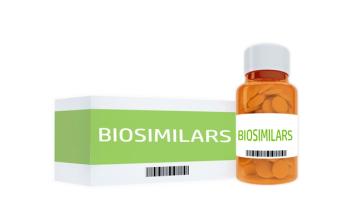
- Pharmaceutical Executive: May 2025
- Volume 45
- Issue 4
AI-Driven Analytics: From Competitive Advantage to Essential Business Tool
Meeting the growing need and demand for fast information to make optimal and timely treatment decisions.
In today’s life sciences landscape, the evolution and use of artificial intelligence (AI) in commercial spaces has reached a critical point. What was once considered a competitive advantage for forward-thinking commercial teams has now become essential for success and sustainability. Nowhere is this transformation more apparent than in the realm of analytics and reporting, where AI-powered solutions are revolutionizing how life sciences companies understand, engage, and serve their markets.
The industry faces increasing pressure to make faster, more accurate decisions in a complex marketplace. Traditional approaches to data analysis and healthcare professional (HCP) engagement are no longer sufficient to maintain a competitive edge. As the volume and complexity of healthcare data continue to expand, AI-driven analytics has emerged as a potential solution to transform this data into actionable insights that drive business growth and improve patient outcomes.
Transforming decision-making with predictive analytics
Historically, the life sciences sales process has taken a reactive approach to identifying patients who should be engaged, as well as their HCPs. While companies once relied on retrospective business rules to identify targets, today’s competitive environment demands more sophisticated and proactive solutions.
AI-driven analytics allows companies to proactively identify the appropriate HCPs before diagnoses or treatment decisions are made. With traditional approaches to HCP segmentation, there tends to be a subset of HCPs that might not receive adequate focus because they presumably lack a large concentration of prospective patients. Predictive analytics lets us examine the full spectrum of HCPs and identify those high-value HCPs who, for example, are poised to make treatment decisions. This enables a more surgical deployment of resources.
This proactive approach extends beyond HCP targeting to include patient identification as well. Patients who may benefit from specific treatments can be identified earlier in their disease progression, potentially improving treatment outcomes and quality of life. The technology can analyze complex patterns in patient data that a business rules approach might miss. Recognizing these subtle indicators can suggest that a patient may be progressing and require intervention.
Marketing efficiency also sees dramatic improvements through AI-driven insights. Rather than distributing marketing resources equally across all potential customers, this approach enables precision marketing—directing resources exactly where and when they’ll generate the greatest impact. Companies have achieved remarkable results using these methods, and in a recent client’s case, one out of every four predictive alerts acted upon resulted in a new prescription start for their brand.
AI-driven analytics can transform the effectiveness of sales teams by improving both the timing and relevance of their interactions. Representatives armed with predictive insights can engage HCPs with information that is salient to their current patient populations and imminent treatment decisions, dramatically increasing the value of each interaction.
Building an effective analytics strategy
The successful implementation of AI-driven analytics begins with a clear, well-defined strategy that aligns with overall business objectives. Organizations must start by identifying specific business requirements that analytics can help realize, whether that’s improving market share in a particular therapeutic area, accelerating uptake of a new product, or optimizing resource allocation across territories.
Companies must determine not only which analytics initiatives to pursue but also how to balance investments in technology, data acquisition, and talent development. The most successful organizations develop frameworks for prioritizing initiatives based on potential impact, feasibility, and alignment with strategic goals.
Measuring and demonstrating return on investment (ROI) remains perhaps the most compelling aspect of strategy development. Being able to demonstrate that investments generate significant returns—whether these investments are in field sales forces or nonpersonal promotion campaigns—is powerful. Effective analytics strategies begin with clear metrics for success and track not only final outcomes, such as prescription volume, but also leading indicators, such as the volume of high-value nontargets identified through predictive modeling, which can provide early validation.
Regulatory and compliance considerations must be woven throughout any analytics strategy. Patient privacy remains of paramount importance, and all approaches utilizing AI must ensure that nothing jeopardizes patient confidentiality. Organizations must build trust through robust data governance frameworks that not only meet current regulatory requirements but anticipate future developments in this rapidly evolving area.
Creating interdisciplinary collaboration
Successful implementation requires collaboration between multiple specialized teams, each bringing unique expertise to the table. Data scientists develop and refine predictive models, while sales teams provide critical context about customer needs and feedback about model effectiveness in real-world scenarios. Clinical experts offer domain knowledge that ensures these models accurately reflect medical realities and treatment pathways.
IT support teams play another crucial role in ensuring data integration and system functionality, while regulatory and compliance specialists navigate the complex legal and ethical considerations surrounding healthcare data. This interdisciplinary approach helps develop robust predictive models and integrates insights into sales strategies while ensuring compliance with legal and ethical standards.
One of the greatest requirements in fostering this collaboration is overcoming communication barriers between technical and nontechnical teams. Data scientists must be able to explain complex methodologies in terms that business stakeholders can understand. Sales and marketing teams need to clearly articulate hurdles in ways that data scientists can translate them into their technical approaches.
Creating a culture of data-driven decision-making requires a commitment from leadership and organizational alignment. Companies that excel in this area often establish centers of excellence that bring together diverse expertise and serve as internal consultancies for analytics initiatives throughout the organization. They also invest in raising the data literacy of all employees to help ensure everyone speaks a common language around analytics.
Addressing implementation challenges
Despite the compelling benefits of AI-driven analytics, implementation can come with significant challenges. Data integration from diverse sources represents one of the most common obstacles. Selecting and choosing the right source is crucial, as is the ability to integrate different data assets to create a complete picture of target patient behaviors. Often, no single data asset tells the complete story.
Ensuring data accuracy and completeness is another potential difficulty. Predictive models are only as good as the information they ingest. Organizations must implement robust governance processes that include validation, cleansing and ongoing monitoring of data quality.
Internal resistance to new technologies often presents a significant barrier to adoption. The best strategy for overcoming this resistance is demonstrating tangible results. By focusing activation efforts on solutions with demonstrated ROI and clear proof points, organizations can convince internal stakeholders of the investment’s value.
The future of AI-driven analytics
Looking ahead, emerging technologies such as natural language processing will further enhance these initiatives by synthesizing unstructured data from medical science liaison notes, electronic medical records charts, and literature reviews. This can accelerate insights from sources that previously required time-consuming manual analysis.
Integration within existing workflow tools remains imperative. The most valuable solutions provide intuitive interfaces that deliver answers directly within users’ daily systems. This helps ensure that insights are available when decisions are being made.
Today, advanced systems can help companies act on patient insights in as little as 48 hours from claim submission. That speed will accelerate dramatically in the next decade. The vision is a healthcare ecosystem in which providers have information almost instantaneously to make optimal and timely treatment decisions.
The direction for biopharmaceutical organizations is clear: Establish a focused analytics strategy, build interdisciplinary teams, and invest in robust data integration capabilities. Those who embrace these technologies today will thrive in tomorrow's increasingly data-driven healthcare landscape.
Mercury Williams is Principal – Patient Analytics and AI, Global Commercial Solutions, at IQVIA
Articles in this issue
8 months ago
Your Voice Box8 months ago
Pharm Exec's 2025 State of the Industry Survey8 months ago
Bridging the Gap: A Large Pharma BlueprintNewsletter
Lead with insight with the Pharmaceutical Executive newsletter, featuring strategic analysis, leadership trends, and market intelligence for biopharma decision-makers.




